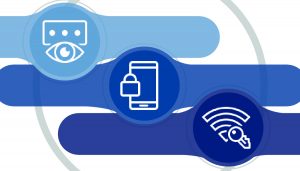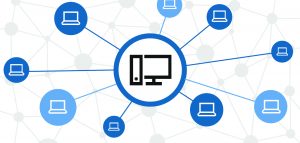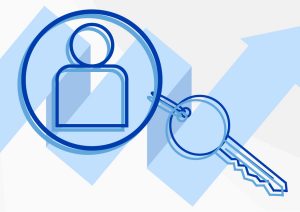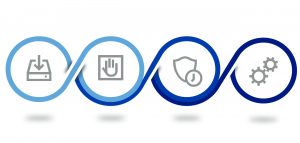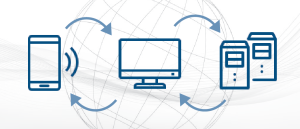
The new CIP-005-7 version has added a new requirement (R3), are you aware of this change? This new standard is coming into effect on October 1 and the controls to achieve the requirement must be in place prior to the effective date. Has your organization found a solution to meet the new requirements?
For those entities that have already had to implement, at some level, the Interactive Remote Access (IRA) requirements applicable to High Impact BCS and their associated PCA and Medium Impact BCS with external routable connectivity, this should not be a foreign concept.
The purpose of this new requirement is to ensure that your Electronic Access Control or Monitoring Systems (EACMS) and Physical Access Control Systems (PACS) are not vulnerable to some of the threats introduced by having vendors and suppliers manage and/or support your assets remotely.
What language are you speaking?
Before we dive into describing the controls needed and the opportunities available to solve for meeting these compliance requirements, let’s take a step back and come to terms with some TERMS.
There are many acronyms used within the industry and I don’t want to bore you with hours of acronym definitions. For a better breadth of understanding I highly recommend becoming familiar with the governing bodies formal descriptions found in the “NERC Glossary of Terms”.
For the purpose of this discussion, I am providing some important terms relative to this specific requirement:
- Bulk Electric System Cyber System (BCS)
- One or more BES Cyber Assets logically grouped by a responsible entity to perform one or more reliability tasks for a functional entity
- Protected Cyber Asset (PCA)
- One or more Cyber Assets connected using a routable protocol within or on an Electronic Security Perimeter that is not part of the highest impact BES Cyber System within the same Electronic Security Perimeter. The impact rating of Protected Cyber Assets is equal to the highest rated BES Cyber System in the same ESP
- Electronic Access Control or Monitoring System (EACMS)
- Cyber Assets that perform electronic access control or electronic access monitoring of the Electronic Security Perimeter(s) or BES Cyber Systems. This includes Intermediate Systems
- Physical Access Control System (PACS)
- Cyber Assets that control, alert, or log access to the Physical Security Perimeter(s), exclusive of locally mounted hardware or devices at the Physical Security Perimeter such as motion sensors, electronic lock control mechanisms, and badge readers.
- External Routable Connectivity (ERC)
- The ability to access a BES Cyber System from a Cyber Asset that is outside of its associated Electronic Security Perimeter via a bi-directional routable protocol connection
- Intermediate Remote Access (IRA)
- User-initiated access by a person employing a remote access client or other remote access technology using a routable protocol. Remote access originates from a Cyber Asset that is not an Intermediate System and not located within any of the Responsible Entity’s Electronic Security Perimeter(s) or at a defined Electronic Access Point (EAP). Remote access may be initiated from: 1) Cyber Assets used or owned by the Responsible Entity, 2) Cyber Assets used or owned by employees, and 3) Cyber Assets used or owned by vendors, contractors, or consultants. Interactive remote access does not include system-to-system process communications
- Intermediate System (IS)
- A Cyber Asset or collection of Cyber Assets performing access control to restrict Interactive Remote Access to only authorized users. The Intermediate System must not be located inside the Electronic Security Perimeter
Now that you have a little background information on the terms we will be referencing, let’s move on to what the requirements are and why they are important for the protection of your BCS.
NERC CIP-005-7 R3- Vendor Remote Access Management for EACMS and PACS:
- (R3.1) Have one or more method(s) to determine authenticated vendorinitiated remote connections.
- (R3.2) Have one or more method(s) to terminate authenticated vendorinitiated remote connections and control the ability to reconnect.
Remote access is a common term initially associated with someone accessing your environment from the internet or outside your organization. However, remote access is any type of connection or session that allows you to connect to a device from your desktop/laptop without physically connecting to the device. This includes all of your privileged employees’ access to systems they manage.
NERC CIP defines these connections as an “Interactive Remote Access” which typically is performed by a user-initiated activity. There is also a second type known as a “system-to-system” connection. This is just as it sounds; service accounts, script/batch accounts, computer processes. See the forementioned glossary of terms for a better understanding.
Both of these remote access types present a significant amount of risk to the BCS, EACM, and PACS environments. The risk manifests itself through the different levels of risk mitigation controls through the different functional network’s criticality ratings.
Your BCA’s and PCA’s probably have more cyber security controls deployed around them, known as defense-in-depth architecture, to preserve the operational reliability of that network than the network that is hosting your laptop or desktops. When a remote connection is established, the less secured remote device now introduces foreign threats to the environment.
Remote access by a vendor further elevates this risk because you are not in control or knowledgeable of how well their security posture is. Just by allowing a remote connection from a vendor your organization has assumed/accepted a certain level of risk.
Some Things to Consider
- How well do you trust the vendor’s cyber security posture at their facility?
- Are you comfortable that the tools they use have been secured appropriately to the level of criticality of your environment?
- Do you trust the actions they are performing within the environment? Can you validate that work?
- How do you know their login ID has not been compromised?
So How Do I keep my critical environment safe as I meet my compliance objectives?
ZERO TRUST: Deny-by-Default
In simple terms: Don’t trust anyone or anything!!! Know what is on the network, authorize only those personnel and assets to perform the business functions needed and deny, remove, or block all other activity.
For those items you have authorized, audit and log all activity to include changes to the environment. You can read additional coverage on supply chain risk in our blog here.
Control Each Connection
Broker the connected session by establishing a protocol break between the BCS/EACM/PACS and the remote vendor’s Cyber Asset. This allows for the ability to authorize the data flow, monitor the session creation and terminate any connected session on demand.
It also provides the ability to define a baseline policy around connection behavior such that the authorization and access can be alert and ready to remove, if desired, the vendor’s ability to re-establish the connection.
Ensure You Are Auditing and Logging
And as always you must have the ability to capture system events, session events, and user activity events to be correlated. This provides for the monitoring, alerting, and auditing for potential malicious activity and incident identification.
Isolate Your Supply Chain
One way to make sure you are doing this is by not giving full access to your supply chain. Instead, those vendors who need access to certain information are segmented into their own space, in addition to layering other security measures like privileged access management on top of it. In the event of a breach on their end, you have reduced your risk.
Taking Your Next Steps
The threat of internal and external remote access to OT and IT environments are the core of our focus. Our solution, ConsoleWorks, delivers on this focus. It provides risk mitigating controls that meet and exceed the NERC CIP compliance requirement(s).
See our three part series on the Zero Trust security architecture to see how ConsoleWorks complements your NERC CIP and Enterprise strategies.
If you would like more details on how ConsoleWorks can help you meet compliance while increasing efficiency and security, we are always available to talk about your particular needs here.
